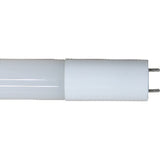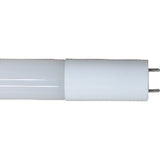When Does It Make Sense to Upgrade Linear Fluorescent Systems to LED?
Posted by Dave on for ProLampSales

By a considerable margin the most common lighting job in North America is general space lighting for commercial and institutional occupancies provided by fluorescent tubes mounted in troffers, direct / indirect pendants and strip lights. In 2016, the U.S. Department of Energy (USDOE) estimated there were over 300 million fluorescent troffers installed in the country.
The installed base of fluorescent lamps (primarily T8) is measured in the billions. Five years ago another USDOE study reported that the average number of 4ft. T8 fluorescent lamps installed in commercial and industrial buildings in the U.S. was well over 200 lamps per building.
Is it any surprise that manufactures have focused considerable development resources and marketing on LED alternatives to fluorescent lamps and fixtures.
Review of LED T8 Benefits
Longer lamp life
70,000 hour LED compared to 30,000 / 40,000 hour fluorescent
Reduced maintenance costs
Assuming the LED lamp life is twice as long as fluorescent, this means eliminating one lamp change over the life of the system
Reduced energy costs
Assume an average savings of 40%.
An 4 foot 18W T8 LED lamp produces roughly 2500 to 2600 lumens compared to a 32W fluorescent lamp that produces 2700 to 2800 lumens
No mercury in LED lamps
Unless the fluorescent lamps are TCLP compliant there are disposal costs associated with old fluorescent lamps because they contain mercury
LED T8 Lamp Retrofit System Options
LED T8 lamps are available in these three set-ups:
- Ballast Compatible (UL Type A) – direct replacement, requires instant or programmed start ballasts
- Ballast Bypass with Internal Driver (UL Type B) – re-wire line voltage directly to the sockets
- Ballast Bypass with External Driver (UL Type C) – replace existing ballast with LED driver
UL Type A: Plug & Play
Pros
- Integrated driver operates directly from most existing instant or program start ballasts
- Fastest installation - remove existing fluorescent, replace with new LED
- Lowest installation cost
Cons
- Limited dimming
- LED efficiency will be affected by ballast efficiency
- Only works if the the existing fluorescent ballasts are compatible
UL Type B: Ballast By-Pass with Line Voltage Direct to Sockets
Pros
- Uses no external ballast or driver
- Eliminates ballast compatibility issues
- Excellent efficacy
- Simplest total system with direct wiring to line voltage
Cons
- Highest installed cost
- Fuse should be added to avoid potential injury if future maintenance staff install a fluorescent tube instead of LED
UL Type C: Ballast By-Pass with External Driver
Pros
- External driver designed for the lamp increases reliability and performance
- Excellent system efficacy
- Longest lamp life
- Best option when dimming is required
Cons
- Requires purchase and installation of LED driver in addition to LED lamp
- Installation cost higher than UL Type A
- How to Decide Which Option is Best For Your Application
LED Upgrade Decision Guide
Facility managers should focus on the LED retrofit options that leverage the weakness in their existing fluorescent system.
Here are three examples:
Example 1: T12 or T8 fluorescent lamps using magnetic or electronic rapid-start ballastsAssessment: Large savings potential because of low system efficiency and higher maintenance costs
LED Options to Consider: Because the existing ballasts are not instant or program start, plug & play UL Type A is not an option. However there is so much opportunity for savings because of this older existing fluorescent system, either UL Type B or Type C, while requiring more expense for installation the long term savings should be considerable.
Example 2: T8 fluorescent lamps and older, standard-efficiency, instant-start electronic ballast
Assessment: This T8 lamp / older instant start ballast combination probably has low to mid-range overall system efficiency making it a good candidate.
LED Options to Consider: This example is made to order for the UL Type A, plug & play option. The existing instant start ballasts allow you to use this lowest cost, easiest solution for making the transition to LED. Of course either of the other options - UL Type B and Type C - could also be considered, but the ROI will likely be much longer longer because of a narrower range of improved performance compared to what is available in example 1.
A couple of cautions:
The expected energy savings may be compromised by the inefficiency of the older ballast.
In addition, there is the possibility that the ballast may be toward end of life and need to be replaced in the near future – another cost to consider.
Example 3: T8 fluorescent lamps and newer, high-efficiency, instant-start or programmed start electronic ballast
Assessment: This system will not offer a compelling opportunity for an LED upgrade because the fluorescent system is already energy efficient enough that the added efficiency of the LED upgrade would not be sufficient to justify the costs.
Important Installation Note: If your LED T8 retrofit lamps utilize internal drivers, the sockets in the fixture must be non-shunted. In many cases they already are, but that should be confirmed. If not, the installation will required replacing the sockets.
- Posted in Fluorescent, LED
Featured Products (View All)
0 Comments




